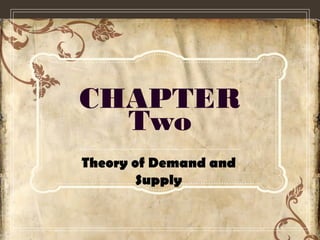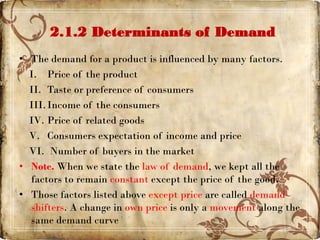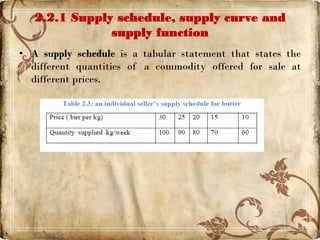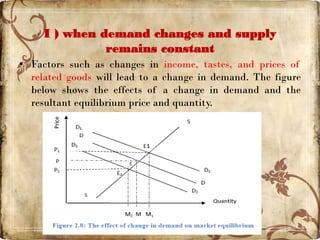This document discusses the theory of demand and supply. It defines demand and explains factors that influence demand such as price, tastes, income, prices of related goods, and expectations. The relationship between price and quantity demanded can be shown through demand schedules, curves, and functions. It also discusses the concepts of market demand, determinants of demand, elasticity of demand including price elasticity and its measurement. The document then defines supply and the law of supply, and explains supply schedules, curves and functions which show the relationship between price and quantity supplied.












































